Marvel Millie and Me
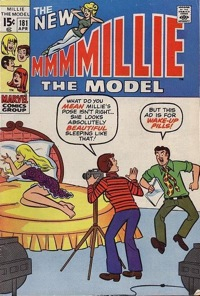 So the third New York Comic Con is one for the annals and I have stopped twitching.
So the third New York Comic Con is one for the annals and I have stopped twitching.
It was, at its Saturday afternoon height, a cauldron of mad, chaotic energy. (And wasn’t it dangerous? Couldn’t all that energy, confined and concentrated by four walls, affect the hearts of atoms and cause the forces that bind them together to disintegrate us all into quarks that would join the neutrinos in spewing through the universe?) That’s okay, for me, in small doses, and maybe in large doses for you, especially if you’re young and new to the megacon scene.
I won’t bother describing the event for you. If you frequent this site, you probably already have all pertinent information. Instead, a tiny, personal note:
Every one of the panels on which I sat was interesting and, I was happy to see, well-attended, which hasn’t always been the case in huge cons, where it sometimes seems that the exchange of currency is more important than honoring and discussing and learning about an art form. But the absolute, stone, hands-down high point came early, on Friday night, when I shared a stage with Peter Sanderson, who moderated, and Gary Freidrich, Joe Sinnott, and Stan Goldberg. Except for Peter, we were all veterans of Marvel’s early days, before the company became Marvel Entertainment and attached its logo to vastly expensive motion pictures, soon to play at a multiplex near you, back when it just published comic books – all kinds of comic books, not just the superhero kind – and there were no multiplexes in which to show ridiculously costly films, even if such films had existed.



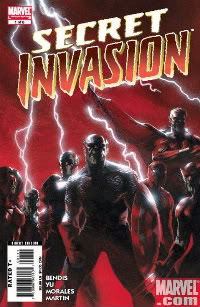 The first issue of Marvel’s big [[[Secret Invasion Summer Extravaganza Skrullfest ’08]]] (or whatever they’re calling it) is here, and there’s just too much to talk about for it to fit in my Weekly Haul reviews roundup. So let’s break this one down between the good, the bad and the ugly. And, be warned if you haven’t read it, spoilers lurk below.
The first issue of Marvel’s big [[[Secret Invasion Summer Extravaganza Skrullfest ’08]]] (or whatever they’re calling it) is here, and there’s just too much to talk about for it to fit in my Weekly Haul reviews roundup. So let’s break this one down between the good, the bad and the ugly. And, be warned if you haven’t read it, spoilers lurk below.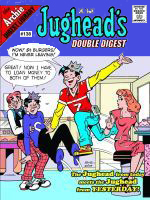

 Today, Rolling Stone is reporting that the Foo Fighters
Today, Rolling Stone is reporting that the Foo Fighters 
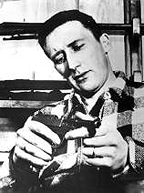 So where we at? For the past month or so, we have, in a scattershot and disorganized way, been discussing the various elements involved in the evolution of superheroes. I don’t think we’ve come to any conclusions worthy of being preserved for the ages, nor should we: things change, darnit. But maybe a little tentative upsumming would not be inappropriate.
So where we at? For the past month or so, we have, in a scattershot and disorganized way, been discussing the various elements involved in the evolution of superheroes. I don’t think we’ve come to any conclusions worthy of being preserved for the ages, nor should we: things change, darnit. But maybe a little tentative upsumming would not be inappropriate.


 Let me be honest: I don’t know all that much about manga. I’ve read a few series (going back to
Let me be honest: I don’t know all that much about manga. I’ve read a few series (going back to 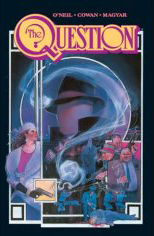 Last week, before I so rudely interrupted us, we were discussing the merits of writing comic books using the “full script” method, in which the writer produces a first cousin to a movie script, with visual directions as well as dialogue and other verbal stuff. Now, we should examine he advantages of working in what has come to be called the “Marvel style.” With this method, you will remember, the writer first does a plot and the penciller renders this into a visual narrative. That’s conveyed to the writer who then adds dialogue and captions and, often, indicates where the balloons and captions should be placed by drawing them onto copies of the artwork.
Last week, before I so rudely interrupted us, we were discussing the merits of writing comic books using the “full script” method, in which the writer produces a first cousin to a movie script, with visual directions as well as dialogue and other verbal stuff. Now, we should examine he advantages of working in what has come to be called the “Marvel style.” With this method, you will remember, the writer first does a plot and the penciller renders this into a visual narrative. That’s conveyed to the writer who then adds dialogue and captions and, often, indicates where the balloons and captions should be placed by drawing them onto copies of the artwork.








